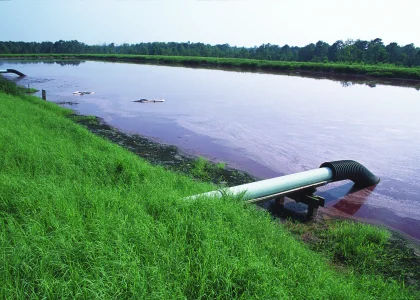Managing manure is a daily reality for swine producers, and phosphorus plays a key role in both waste and feed management.
Anaerobic lagoons are commonly used to store and treat swine waste, but over time, a dense layer of nutrient-rich sludge builds up at the bottom. This sludge is especially high in phosphorus—a costly but essential mineral in swine diets—and if left unmanaged, it can reduce lagoon capacity and impair performance.
Fernando Soler and Eric van Heugten from the Department of Animal Science at North Carolina State University are exploring how this sludge—especially in its ashed form—can be repurposed as a phosphorus source for pigs.
Swine lagoon sludge is not just a waste byproduct. It holds valuable nutrients that could benefit both crop systems and pig diets.
Why sludge matters
Researchers took a closer look at what makes this sludge more than just a waste product, and why it could be worth recovering:
- ✅ Lagoon sludge contains 4–5% phosphorus (dry matter basis).
- ✅ It also holds calcium, potassium, magnesium, sulfur, zinc, copper, and iron.
- ✅ Phosphorus is the third most expensive nutrient in swine diets.
While lagoon effluent is often used on crops, sludge is harder to handle due to its density. Drying and ashing the sludge reduces volume, kills pathogens, and concentrates nutrients.
Ashing process
To prepare the sludge for use as a mineral source, researchers followed a controlled ashing process:
- ✅ Sludge was dried and combusted at 1800°C using a custom chamber.
- ✅ Ash yield was 45–55% of original material.
- ✅ Final ash was ground to 1 mm particle size and analyzed for mineral content.
Feed trial highlights
The researchers conducted a feeding trial with 56 pigs, comparing phosphorus from monosodium phosphate (MSP) and ashed swine lagoon sludge (ASLS). MSP is the industry standard with 100% bioavailability.
Key findings from the trial help to illustrate how ASLS compares to MSP in terms of phosphorus absorption and bone mineralization:
- ✅ Serum phosphorus increased with both MSP and ASLS.
- ✅ ASLS showed 69% phosphorus bioavailability.
- ✅ Bone ash percentage improved with ASLS, though bone strength did not.
What it means for producers
The study shows that ASLS could become a viable, cost-effective phosphorus source—if approved for feed use. It offers a way to recover nutrients from waste and reduce reliance on commercial phosphorus.
This research highlights a practical path for turning lagoon sludge from a disposal challenge into a feed resource. For producers, it could mean better waste management and lower feed costs.

